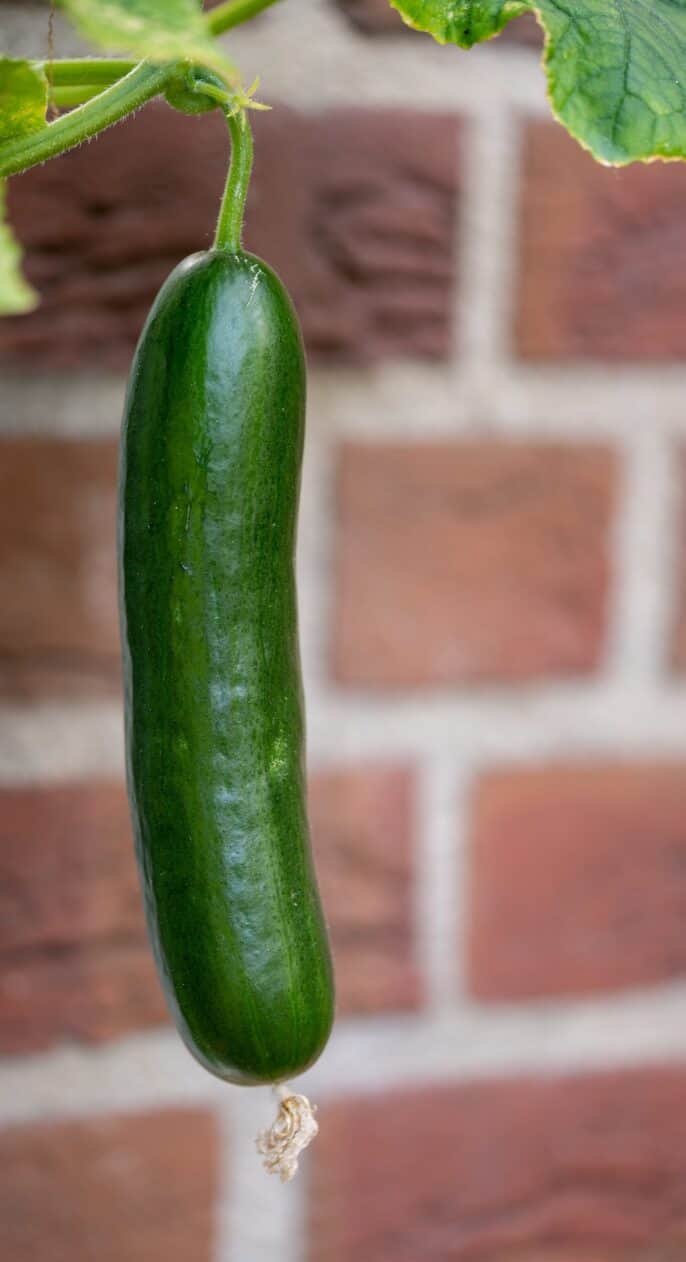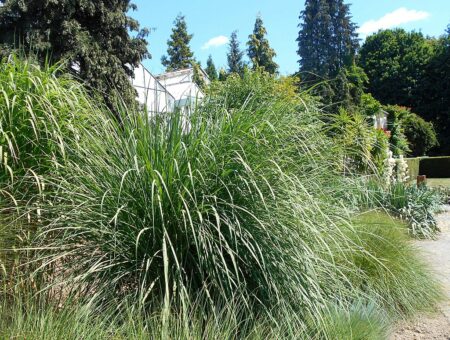Now I know what you’re thinking.
Vertical? Aren’t cucumbers supposed to be sprawled with their vines, taking up half the space in your garden?
Vertical growth is like giving your cucumbers a personal ladder to climb, saving you space, making harvesting easier, and boosting the overall health and productivity of your cucumber plants.
So, get ready to defy gravity as we explore the ins and outs of vertical planting and maybe even uncover some fun cucumber secrets along the way.
Why You Should Grow Cucumbers Vertically
Here are some reasons why vertical farming is good for cucumbers.
If you want to grow cucumbers regularly, read this article!
Reason #1: Saves Space
When cucumbers are sprawled on the ground, they take up a significant amount of horizontal space.
By growing them vertically, you’re effectively utilizing the vertical plane instead, allowing you to grow more cucumbers in the same square footage, maximizing your garden’s productivity.
Using ground space effectively, you can even grow companion crops such as lettuce, radishes, or herbs around the vertical structure.
Reason #2: Improved Aesthetics
When cucumbers are grown vertically, the upward growth creates an eye-catching vertical element in your garden, adding height, structure, and elegance.
It also helps to promote a more organized and tidy garden layout.
A vertical cucumber structure can become a central feature that draws attention and adds interest to the overall landscape.
Reason #3: Easy Harvesting

Growing cucumbers vertically can make the harvesting process significantly easy.
This process brings the fruits to a more accessible height, so you no longer have to bend down or crouch to search for hidden cucumbers amidst sprawling vines.
The cucumbers hang down or are positioned at eye level, making it easy to spot ripe ones ready for harvest.
Reason #4: Easier Pest Management
When cucumbers are grown vertically, they are raised off the ground, naturally creating a less favorable environment for certain ground-dwelling pests like slugs, snails, and crawling insects.
Hence, they will find it more challenging to reach the cucumber plants reducing the likelihood of pest infestations and minimizing the need for constant vigilance and control measures.
Reason #5: Improved Air Circulation
Cucumbers’ vertical growth pattern naturally reduces the foliage density compared to sprawling vines on the ground, allowing air to move more freely around the plants.
This prevents the buildup of stagnant or humid conditions, which can promote the growth of fungal diseases such as powdery mildew that thrive in stagnant conditions.
By elevating the plants, water drains more efficiently, reducing the chances of prolonged leaf wetness and associated problems.
The free air movement helps disperse pollen from the male flowers to the female flowers, increasing the chances of pollination in cucumbers.
Various Ways To Grow Cucumbers Vertically

To grow your cucumbers vertically, you would need to provide support for them to grow on.
Here are a few ways to provide support for your cucumbers.
Method #1: Trellis
Growing cucumbers on a trellis is one of the most popular and effective methods.
Here are the steps to follow when using this method:
- Choose a sturdy and tall trellis to support the growth of cucumber vines, such as wire and wooden trellises.
- Securely anchor it in the ground or attach it to a stable structure.
- Prepare the soil by loosening it and adding organic matter, such as compost.
- If you use seedlings, space them 12 to 18 inches (30-45 cm) apart. If planting seeds, sow them about 1 inch (2.5 cm) deep into the soil, with multiple seeds per hole.
- Place the trellis behind the cucumber plants and drive anchors into the ground on either side of the trellis to secure it firmly.
- As the cucumber plants grow, gently guide the vines toward the trellis, so the tendrils will naturally wrap around the trellis for support.
Method #2: Fence
When using a fence to grow cucumbers, ensure it receives adequate sunlight and is accessible for maintenance and harvesting.
Follow these steps:
- Select a sturdy fence that can support the weight of growing cucumber vines, such as a chain-link fence or a fence with wire mesh.
- Prepare the soil by loosening it and ensuring it is fertile and well-draining.
- Plant cucumber seedlings or sow cucumber seeds at the base of the fence and thin out the weaker ones, leaving the strongest cucumber plant as they germinate.
- Install support wires along the fence, spaced vertically about 6-8 inches (15-20 cm) apart. Ensure they can bear the weight of the growing vines.
- As the cucumber plants grow, train them to climb and weave through the support wires or twine.
Method #3: Garden Netting
Follow these steps to grow your cucumbers on garden netting:
- Set up a sturdy support structure, such as poles or stakes, along the length of your cucumber planting area, ensuring they are securely anchored in the ground.
- Attach the garden netting to the poles, ensuring it is taut and at a height that allows the cucumber vines to reach it as they grow.
- Prepare the soil and amend it to ensure optimal growing conditions.
- Plant your cucumber seedlings or sow the seeds at the base of the netting, gently guiding the vines towards the garden netting as they germinate.
- As the vines grow taller, secure them to the netting using soft garden twine or plant clips to help keep the vines organized and prevent them from sagging or falling.
Conclusion
Growing cucumbers vertically is a game changer for your garden.
It not only elevates its visual appeal and saves space but makes harvesting a breeze.
So, use any of the vertical methods we’ve provided in this guide and get ready to have a thriving cucumber haven.
















